
The various tones of the color coral are orange, red and pink representations of the colors of those cnidarians known as precious corals.

Beige is variously described as a pale sandy fawn color, a grayish tan, a light-grayish yellowish brown, or a pale to grayish yellow. It takes its name from French, where the word originally meant natural wool that has been neither bleached nor dyed, hence also the color of natural wool.

Bistre is a pigment made from soot. Historically, beechwood was burned to produce the soot, which was boiled and diluted with water. Many Old Masters used bistre as the ink for their wash paintings.[1] Bistre's appearance is generally of a dark grayish brown, with a yellowish cast.

Lilac is a light shade of pink representing the average color of most lilac flowers. The colors of some lilac flowers may be equivalent to the colors shown below as pale lilac, rich lilac, or deep lilac. However, there are other lilac flowers that are colored red-violet.
Payne's grey is a dark blue-grey colour used in painting. Originally a mixture of iron blue, yellow ochre and crimson lake, Payne's grey now is often a mixture of blue and black, or of ultramarine and burnt sienna. The colour is named after William Payne, who painted watercolours in the late 18th century, who most likely developed the colour while trying to produce a mixer that was less intense than black. Payne's grey was deemed an obsolete term in the early 19th century, but is still used by artists today.
Taupe is a dark gray-brown color. The word derives from the French noun taupe meaning "mole". The name originally referred only to the average color of the French mole, but beginning in the 1940s, its usage expanded to encompass a wider range of shades.
Russet is a dark brown color with a reddish-orange tinge. As a tertiary color, russet is an equal mix of orange and purple pigments. The first recorded use of russet as a color name in English was in 1562.
Ecru is a grayish yellow or cream colour. It is still defined by some dictionaries as the colour of unbleached linen, which it still is in French. In English, over the years it has come to be used for a quite different, much darker color.

Bole is a shade of reddish brown. The color term derives from Latin bōlus and refers to a kind of soft fine clay whose reddish-brown varieties are used as pigments, and as a coating in panel paintings and frames underneath the paint or gold leaf. Under gold leaf, it "warms" the colour, which can have a greenish shade otherwise. However, bole in art is a good deal more red and less brown than the modern shade; it is often called Armenian bole. Although bole also means the trunk of a tree, these words are simply homographs that do not share an etymological origin.

Varieties of the color green may differ in hue, chroma or lightness, or in two or three of these qualities. Variations in value are also called tints and shades, a tint being a green or other hue mixed with white, a shade being mixed with black. A large selection of these various colors is shown below.
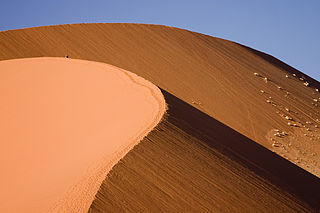
Desert sand is a very light and very weakly saturated reddish yellow colour which corresponds specifically to the coloration of sand. It may also be regarded as a deep tone of beige.

Camel is a color that resembles the color of the hair of a camel.
Livid is a medium bluish-gray color. This color name comes from the Latin color term lividus meaning "'a dull leaden-blue color', and also used to describe the color of contused flesh, leading to the English expression 'black and blue'". The first recorded use of livid as a color name in English was in 1622.
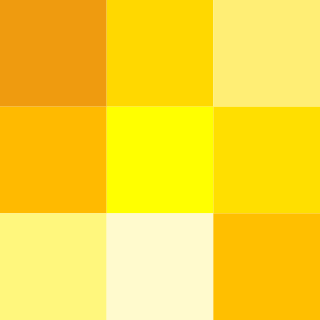
Varieties of the color yellow may differ in hue, chroma or lightness, or in two or three of these qualities. Variations in value are also called tints and shades, a tint being a yellow or other hue mixed with white, a shade being mixed with black. A large selection of these various colors is shown below.

Variations of gray or grey include achromatic grayscale shades, which lie exactly between white and black, and nearby colors with low colorfulness. A selection of a number of these various colors is shown below.
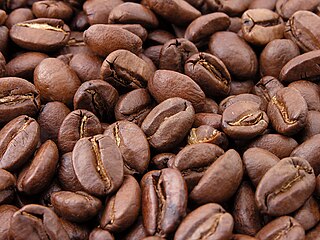
Coffee is a brownish color that is a representation of a roasted coffee bean. Different types of coffee beans have different colors when roasted—the color coffee represents an average.
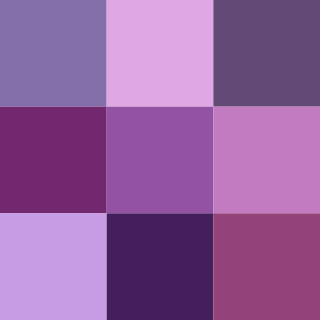
There are numerous variations of the color purple, a sampling of which is shown below.
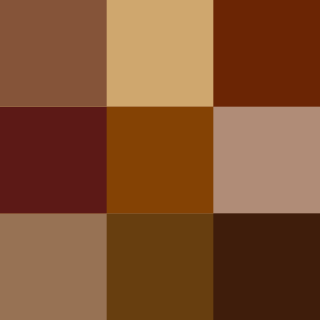
Shades of brown can be produced by combining red, yellow, and black pigments, or by a combination of orange and black—illustrated in the color box. The RGB color model, that generates all colors on computer and television screens, makes brown by combining red and green light at different intensities. Brown color names are often imprecise, and some shades, such as beige, can refer to lighter rather than darker shades of yellow and red. Such colors are less saturated than colors perceived to be orange. Browns are usually described as light or dark, reddish, yellowish, or gray-brown. There are no standardized names for shades of brown; the same shade may have different names on different color lists, and sometimes one name can refer to several very different colors. The X11 color list of web colors has seventeen different shades of brown, but the complete list of browns is much longer.

Shades of chartreuse are listed below. Chartreuse is a color between yellow and green, so named because of its resemblance to the color of the French liqueur green chartreuse.

Rose is the color halfway between red and magenta on the HSV color wheel, also known as the RGB color wheel.









